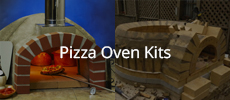Re: Home brew concrete and cast-in-place concrete.
3/8" - 3/4" is a standard range for traditional mortar.
Announcement
Collapse
No announcement yet.
Home brew concrete and cast-in-place concrete.
Collapse
X
-
Re: Home brew concrete and cast-in-place concrete.
None at all.
Leave a comment:
-
Re: Home brew concrete and cast-in-place concrete.
While one side of the world sleeps, the other side responds!Originally posted by stonecutter View PostHere is a link which might help clarify the differences of mortar types.
Mortar
Another link with a ton of useful info.
Mortar & Grout | Portland Cement Association (PCA)
Thank you for the link--I can see by just glancing at it, there is a lot of information included. It is going to take some time to look at.
I have some thinset left over from doing my tilework next to front door. From previous experience.. it works great as long as it is not laid too thick (maybe that is why they call it "thinset") Quick initial set. Thick bed, much longer to obtain a strong bond.
Also have some acrylic bonding liquid (at least I think that's what it is). Since my concrete work was done at a couple of different times.. supplier said to first thoroughly clean, then use a skim coat (portland, bonding agent, micro sand) to coat the concrete and fill in minor voids--then proceed with tile work as if a new build.
Old timer tile guys use a crumbly mud under their tile to create a flat surface, then spread a slurry of water/portland and set the tile directly into the slurry. Sometimes good results, many times -- hollow sounding tile when you tap on it!
Think I will go with the 1-1-(5 to 6) mix, and back butter the stone as mentioned. Makes sense .. the stone is very porous, volcanic in nature--some kind of a zeolite tuff. That way, you have a bonding material on the surface to begin with and do not have to rely on absorption alone!
Do you see any problem with a 3/4" thick mortar bed?Last edited by mikku; 02-19-2013, 03:34 PM.
Leave a comment:
-
Re: Home brew concrete and cast-in-place concrete.
Its always, 6:1:1ishOriginally posted by david s View PostBricklayers usually use 4:1 sand, cement and then sometimes use additives I previously mentioned to adjust the brew to their liking and workability.
Leave a comment:
-
Re: Home brew concrete and cast-in-place concrete.
That looks like cantera stone, limestone with volcanic inclusions, basically. They build fireplaces with it in Mexico.
Leave a comment:
-
Re: Home brew concrete and cast-in-place concrete.
Good idea. Instantly caustic when it contacts water...or blood.Originally posted by david s View PostThe lime is harder on the hands..... I use a barrier cream on my hands prior to handling cement or lime. It helps a bit.
Leave a comment:
-
Re: Home brew concrete and cast-in-place concrete.
If you are going to use a gauged stone like that, why not use an exterior grade modified thin-set instead of mortar. That should be readily available anywhere. I think that is a better option for setting the stone you showed in the picture.
If you do use mortar, make your mix a little on the rich side ( slightly heavier ratio of lime/portland or mortar) and paste the back of the stone with a slurry of your mortar mix ( with no sand added ) and water. Use a heavy brush and apply it to the stone, after you clean off any dust or cutting slurry.Last edited by stonecutter; 02-20-2013, 07:41 AM.
Leave a comment:
-
Re: Home brew concrete and cast-in-place concrete.
That isn't considered as mortar ( by Masons, anyway ). It is too strong, develops cracks between the stone and bed immediately, and traps moisture behind it..leading to efflorescence, spalling and water damage.Originally posted by mikku View Postportland cement and sand and water... make a lousy mortar, doesn't stick to a trowel--just slips off.
Leave a comment:
-
Re: Home brew concrete and cast-in-place concrete.
Here is a link which might help clarify the differences of mortar types.
Mortar
Another link with a ton of useful info.
Mortar & Grout | Portland Cement Association (PCA)Last edited by stonecutter; 02-19-2013, 10:16 AM.
Leave a comment:
-
Re: Home brew concrete and cast-in-place concrete.
Thank you for the proportions, I will add it to my list of recipe and let you know how the hearth turns out!Originally posted by Tscarborough View Post1-1-5 to 6 depending upon the sand. Sharp sand less, round sand more.
Leave a comment:
-
Re: Home brew concrete and cast-in-place concrete.
David s,Originally posted by david s View PostYou need to be clearer on what you are mortaring. You need a different type for normal bricks to that required for refractory materials. If you want a standard mortar to be more sticky use some mortar plasticiser, lime, bricklayers clay or fireclay added to the mix. Try the search function I'm sure mortar recipes have been discussed ad nauseum.
I did the search earlier today, the only result I found--referred to standard masonry mortar, no specifications used for a decorative arch. And your reference of 50/50 mix portland and lime with no reference to sand proportions.
There is a lot of chatter about home brew, other refractories, recipe for castable refractory---they seem to go on as you said "ad nauseum". Really not looking for short cuts---but to search everything since 2007 with no good results gets a little tiring! The net version is equally non-productive.
Leave a comment:
-
Re: Home brew concrete and cast-in-place concrete.
As far as I'm aware there is no product readily available in Australia called "masonry cement" either. Bricklayers usually use 5:1 sand, cement and then sometimes use additives I previously mentioned to adjust the brew to their liking and workability.Last edited by david s; 02-19-2013, 05:53 PM.
Leave a comment:
-
Re: Home brew concrete and cast-in-place concrete.
1-1-5 to 6 depending upon the sand. Sharp sand less, round sand more.
Leave a comment:
-
Re: Home brew concrete and cast-in-place concrete.
Thank you for the recent posts!
So the question started with #47, and #49 posts...
And since "no masonry cement" is sold in Japan, what proportion of "Sand, Portland Cement, and Lime" would be recommended to make a mortar suitable for bedding a 30mm thick slab of "Oya Stone" as an exterior landing; and for bonding the same material , 60mm thick as a decorative arch?
Leave a comment:
-
Re: Home brew concrete and cast-in-place concrete.
Masonry cement is either a blend of portland/lime or a type of portland clinker milled with limestone that serves the purpose of lime.
Leave a comment:





Leave a comment: